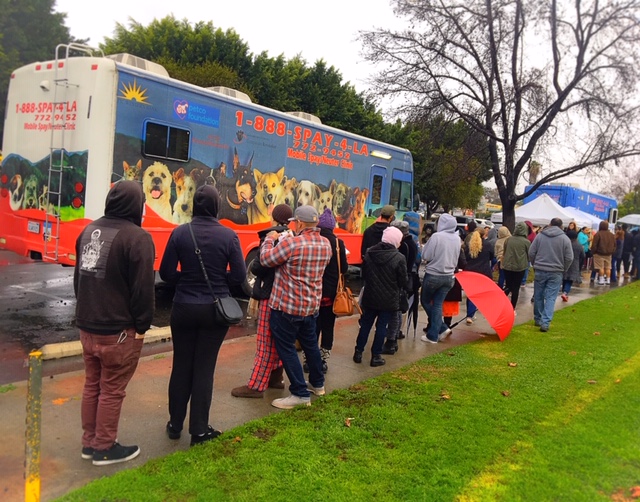Module 4: The Case of the Spay-Neuter Skeptic
“Targeted” Spay-Neuter
Targeted spay-neuter refers to focusing on the populations of animals that represent the greatest risk for shelter intake and euthanasia. This might include community cats, specific breeds, or pediatric animals. Since funding for spay-neuter is limited, targeting assures that subsidized surgeries focus on animals that wouldn’t otherwise be sterilized.
At the 2017 Society of Animal Welfare Administrators Annual Conference, Dr. Gary Weitzman, President and CEO of San Diego Humane Society revealed that 80% of pets living in poverty are unsterilized. At the same conference, Matt Bershadker, President and CEO of the ASPCA, reported that 77% of those relinquishing their animals in Los Angeles cited the inability to afford or access veterinary care (including spay-neuter) was the primary reason. This pattern of high intake from low-income neighborhoods was repeated in New York City, Miami, and other cities. For these reasons, many animal welfare agencies target spay-neuter programs in underserved areas.
While income qualification may seem like a simple method of targeting clients for subsidies, there is much more impacting access to veterinary care than raw income. Besides being potentially invasive and demeaning, “proof of poverty” screening fails to capture all of the challenges families face. There is no way to know who is facing their own medical bills, who has lost a job, whose controlling partner won’t allocate money for pet care, who took on the pets of a relative who died, whose tuition just went up, and a myriad of other reasons that paying for the escalating cost of routine and emergency pet care is difficult. Many families are a paycheck or two away from housing insecurity, and 23 million pets live in families lacking access to care.
How do targeted sterilization programs work?
Targeted programs work to help families sterilize their pets before they can reproduce. Mapping shelter intake and animal nuisance complaints can identify neighborhoods where more spay-neuter access is needed. Such programs provide convenient and subsidized pet sterilization services to the service areas that are producing the highest intake for shelters. The most effective targeted programs work to identify and remove any barriers in access to care, including cost, awareness, language, transportation, and lack of a permanent address.
While stationary clinics usually have the highest capacity and longer daily operating hours, sometimes bringing mobile clinics to the neighborhood is the best way to raise awareness and reduce transportation barriers. Targeted spay-neuter may also be integrated with more comprehensive programs that offer other essential veterinary services such as vaccinations, heartworm preventives, parasite control, and treatment of illnesses and injuries. And these access to care services may be wrapped into even larger “safety net” programs that seek to keep pets in homes and out of the shelter, such as pet food banks, crisis boarding, behavior training, and pet rehoming.


